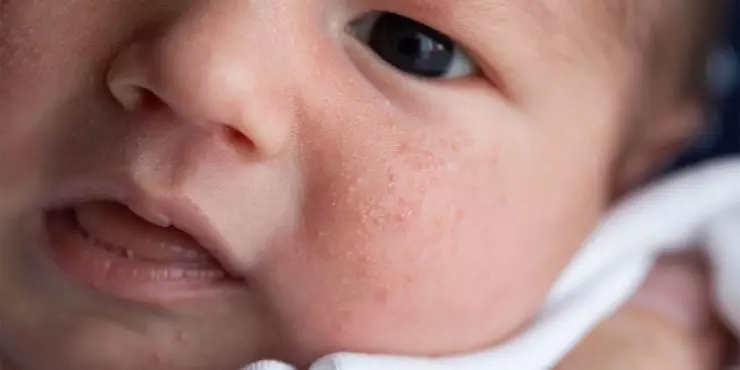
As we embrace the sunshine and plan on hitting the lakes, it is important to remember sun and heat safety, especially when it comes to our little ones. As the temperatures rise, all parents should be aware of heat rash, specifically in babies. This condition, also known as prickly heat or miliaria, can be uncomfortable for your little one but is usually not serious.
Recognizing and Treating Heat Rash in Babies – What is it?
Heat rash occurs when sweat gets trapped in the skin. Babies are particularly susceptible because their sweat glands are not fully developed. It often appears in hot, humid weather or when babies are dressed too warmly.
Recognizing Heat Rash – The Symptoms
- Tiny red bumps which usually are found on areas covered by clothing, such as the neck, chest, back, and diaper area.
- Itchy skin which may cause your baby to appear uncomfortable and fussy due to the itchiness.
- Areas where sweat accumulates, like skin folds, are common sites for heat rash.
Types of Heat Rash
There are different types of heat rash, categorized by the depth of the blocked sweat ducts:
- Miliaria Crystallina: The mildest form, appearing as clear, fluid-filled blisters that break easily.
- Miliaria Rubra: More common, presenting as red bumps and often causing itching or prickling.
- Miliaria Profunda: Less common, affecting deeper layers of the skin, appearing as flesh-colored lesions.
Treating Heat Rash
Treatment focuses on cooling the skin and reducing sweating. Here are some steps you can take:
- Cool the Skin: Move your baby to a cooler, less humid environment. Use fans or air conditioning to help.
- Dress Lightly: Keep your baby in lightweight, loose-fitting clothing. Natural fabrics like cotton are ideal as they allow the skin to breathe.
- Keep the Skin Dry: Gently pat the skin dry with a soft towel if your baby sweats. Avoid vigorous rubbing.
- Baths: Give your baby a cool bath to soothe the skin. Avoid using soap on the rash, as it can irritate the skin.
- Avoid Ointments and Creams: Most ointments and creams can block sweat ducts further. If necessary, use a mild, fragrance-free lotion sparingly.
- Stay Hydrated: Ensure your baby is well-hydrated, especially in hot weather.
When to Seek Medical Attention
While heat rash is usually mild, there are times when you should see a doctor. This includes if there are no improvements after at-home treatments, if there is increased swelling, redness, warmth, or puss, and if your baby develops a fever. These are all signs that it is time to see your doctor.
Preventing Heat Rash

Prevention is key to avoiding heat rash, and this includes taking some simple steps to prevent it. These include:
- Keep your baby cool by dressing them in lightweight, breathable clothing and avoid overdressing.
- Ensure good air circulation, especially in your baby’s sleeping area.
- Give your baby breaks from the heat by moving to a cooler environment regularly.
- Keep your baby well-hydrated to help regulate body temperature.
While uncomfortable, heat rash in babies is generally not serious and can be managed with simple home care. Keeping your baby cool, dry, and hydrated can help prevent and treat this common condition effectively. If you have any concerns or if the rash persists, don’t hesitate to contact your family physician for further advice.